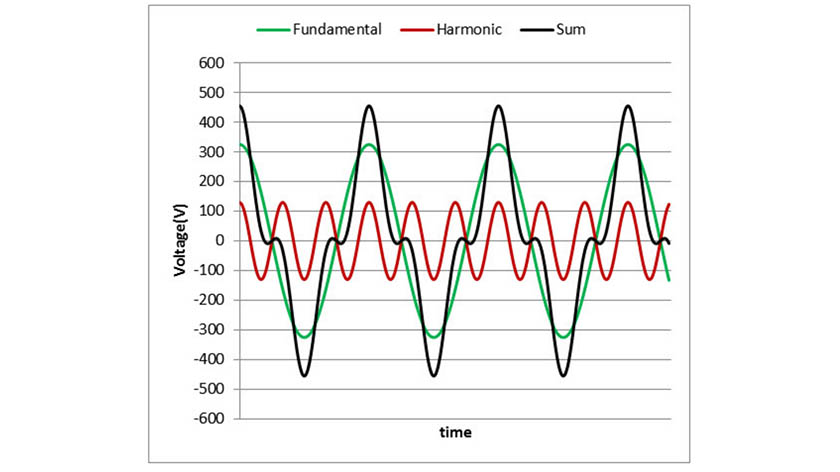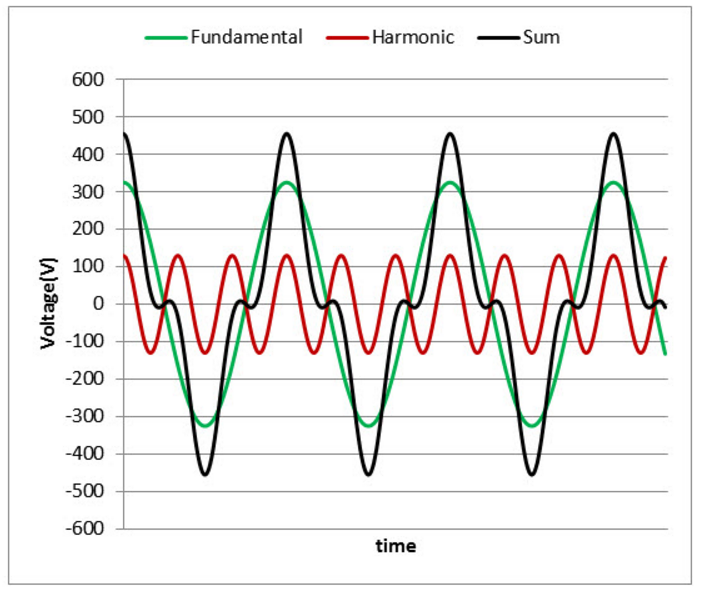Measuring PUE Doesn't Have to Be Hard | Packet Power
Trying to understand the impacts of changes in demand in your data center? Perhaps you want to measure the impacts of energy efficiency initiatives...
2 min read
![]() Packet Power Team
:
Sep 29, 2022 10:18:21 AM
Packet Power Team
:
Sep 29, 2022 10:18:21 AM

Our physical world is full of waves–big, small, visible, and invisible. Total harmonic distortion (THD) is a useful tool for measuring what is happening when a wave is not behaving exactly the way you expect it to.
The concept of THD can be applied to several fields of science. In acoustics, THD can tell you how much a loudspeaker is distorting the soundwaves of the signal being fed into it. With electricity, THD can help you understand how the equipment in your building is impacting the power you are drawing from the utility company. And, just like with loudspeakers, too much distortion can become a problem with electricity.
At its most basic level, THD is a measure of how much your load is distorting the perfect waveform of the power provided by your utility. If your equipment is creating too much distortion it can reduce the life of electrical circuits, damage microprocessors, and increase the current in power systems, resulting in higher temperatures in neutral conductors and distribution transformers.
In addition, lower THD will result in a higher power factor for you, lower peak currents, and more efficiency in your power usage.
Packet Power’s power monitors help you measure THD. Our devices were initially designed for data centers, but they can provide value in any critical facility that uses a lot of power.
THD is always present in current and voltage but too much distortion can cause problems. Understanding THD is the first step in ensuring it isn't creating problems in your facility.
THD is a measurement of how much the voltage or current waveform is "distorted" or changed from its conventional sine wave shape. Power comes from the utility in the form of a clean sine wave. As it goes through different types of loads, the voltage and current get utilized at different rates, causing distortion to be reflected back from the load onto the system.
Distortion mainly occurs in multiples of the carrier frequency (50 or 60 Hz) which are referred to as harmonics. For example, the 3rd harmonic on a 60 Hz line would be 180 Hz (3 X 60), the 7th would be 420 Hz. THD is the cumulative percentage of distortion for all harmonic orders relative to the total power. Distortion is measured separately for the current (THDI) and voltage (THDV).

Just about all non-linear loads create harmonics. Examples of these types of loads include non-incandescent lighting, computers, uninterruptible power supplies, telecom equipment, copy machines, battery chargers, and devices with a solid-state AC to DC power converter. Distortions in current cause distortions in voltage.
Harmonics are innocuous at lower levels but very high levels may cause unwanted effects such as heating on the lines or disturbances in some equipment. While there is no firm limit in the US, IEEE 519 recommends that general systems like computers and related equipment have no more than 5% total harmonic voltage distortion with the largest single harmonic being no more than 3% of the fundamental voltage.
Contact sales@packetpower.com if you'd like more information on a

Trying to understand the impacts of changes in demand in your data center? Perhaps you want to measure the impacts of energy efficiency initiatives...

As the demands on data centers continue to grow, space is at a premium in existing facilities. In an attempt to maximize their computing per square...

Energy is one of the highest costs in data centers -- even the small ones. Server rooms and data closets (known as "small embedded data centers") are...